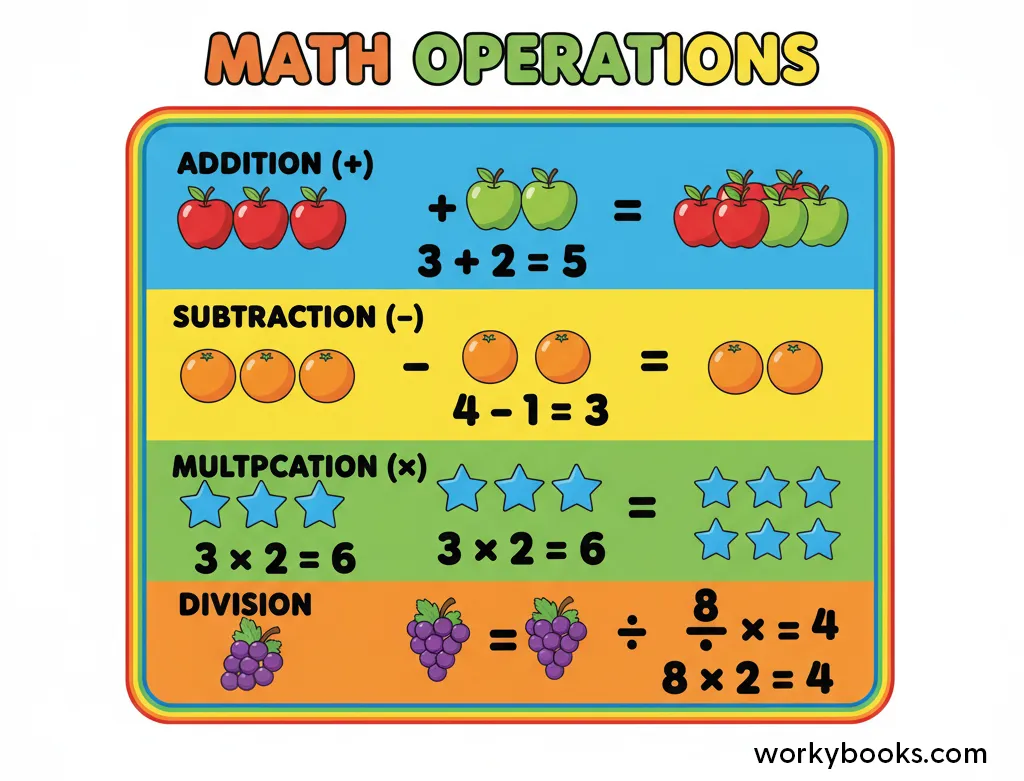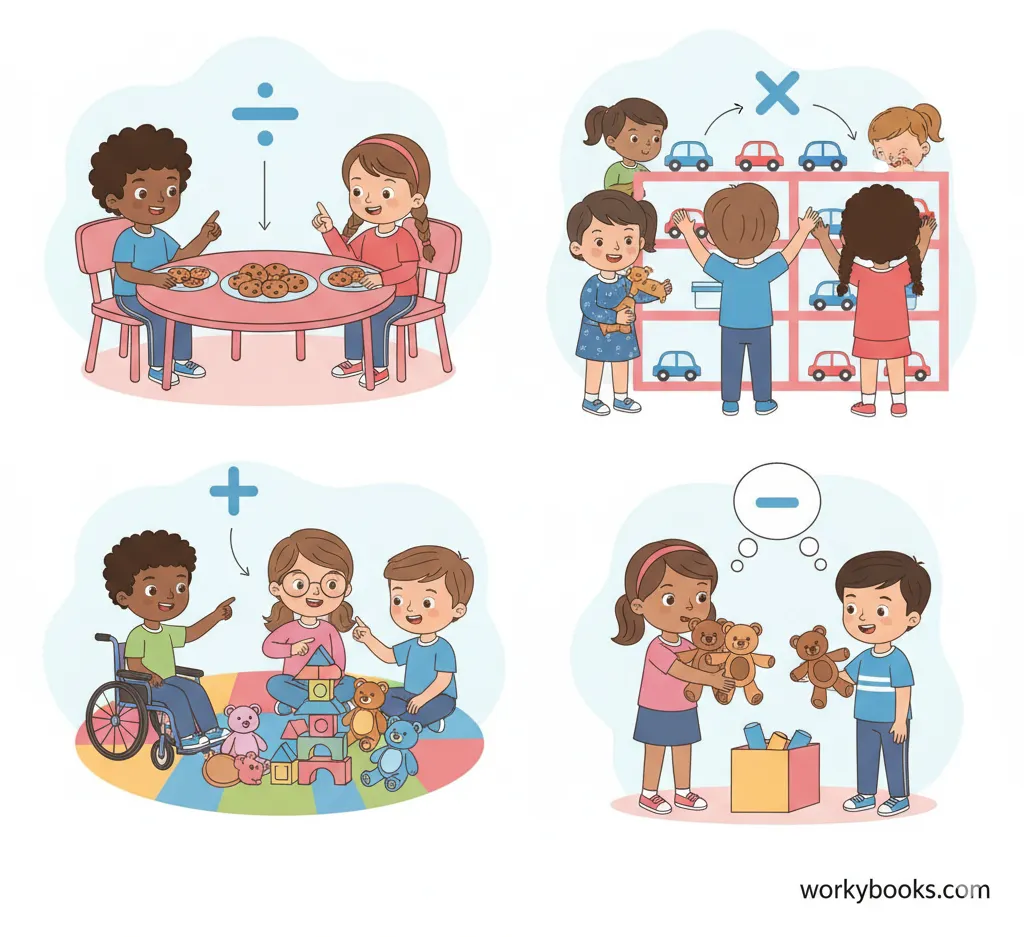Math Operations - Definition, Examples, Quiz, FAQ, Trivia
Understanding Addition, Subtraction, Multiplication, and Division
What is a Math Operation?

A math operation is like a special action we use with numbers! Think of it as a set of instructions that tells us what to do with numbers to get a result.
Just like following a recipe to bake cookies, math operations give us steps to follow with numbers. The four basic operations are addition, subtraction, multiplication, and division. These are the building blocks of all math!
Math Fact!
The word "operation" comes from a Latin word meaning "to work." So when you're doing math operations, you're working with numbers!
The Four Basic Operations

There are four main math operations that you'll use most often. Each one has a special symbol and does something different with numbers:
Addition
Putting numbers together to find the total
Example: 3 + 2 = 5
Subtraction
Taking away from a number to find what's left
Example: 5 - 2 = 3
Multiplication
Adding equal groups quickly
Example: 3 × 4 = 12
Division
Splitting into equal parts
Example: 12 ÷ 4 = 3
These operations are like tools in a math toolbox. You choose the right tool depending on what you need to do with the numbers!
Real-Life Examples of Math Operations

We use math operations every day without even realizing it! Here are some examples of how these operations appear in our daily lives:
Addition Examples
Counting your toys: 2 cars + 3 trucks = 5 vehicles total
Adding money: $2 + $3 = $5
Subtraction Examples
Sharing cookies: 10 cookies - 3 given away = 7 left
Spending money: $10 - $4 = $6 remaining
Multiplication Examples
Equal groups: 4 bags with 5 apples each = 20 apples
Arrays: 3 rows of 4 chairs = 12 chairs total
Division Examples
Sharing equally: 12 cookies ÷ 4 friends = 3 each
Making groups: 15 students ÷ 5 per group = 3 groups
The more you practice these operations, the easier they become. Remember, math is all around us!
Did You Know?
The equals sign (=) was invented in 1557 by Welsh mathematician Robert Recorde. He thought two parallel lines were the best way to show that two things are equal!
Math Operations Quiz
Test your knowledge with this quiz! Answer all 5 questions to see how much you've learned about math operations.
Frequently Asked Questions
Here are answers to some common questions about math operations:
Math Facts About Operations
Discover some fascinating facts about math operations and their history!
Symbol Origins
The plus (+) and minus (-) symbols first appeared in print in 1489 in a mathematics book by Johannes Widmann. The multiplication symbol (×) was introduced by William Oughtred in 1631.
The Power of Zero
Adding zero to any number gives you the same number (5 + 0 = 5). Multiplying any number by zero gives you zero (5 × 0 = 0). But dividing by zero is impossible - it's undefined in mathematics!
Ancient Calculations
People have been using basic math operations for thousands of years! The oldest known mathematical artifact is the Lebombo bone from Africa, dating back 35,000 years, which appears to have tally marks for counting.
Number Patterns
When you multiply any number by 9, the digits of the product add up to 9! For example, 9×2=18 (1+8=9), 9×5=45 (4+5=9), and 9×11=99 (9+9=18, 1+8=9). This pattern continues with larger numbers too.





